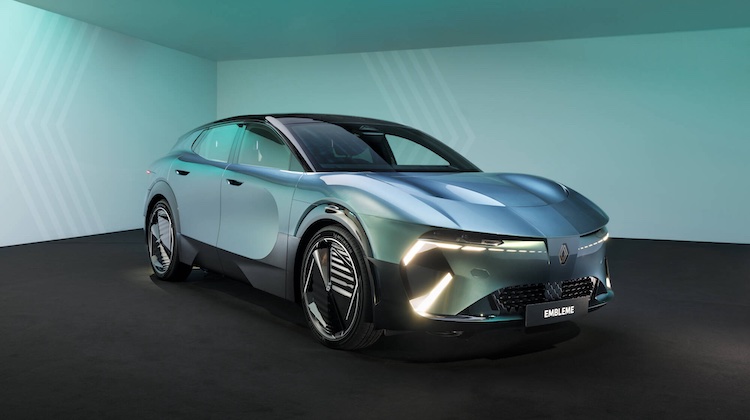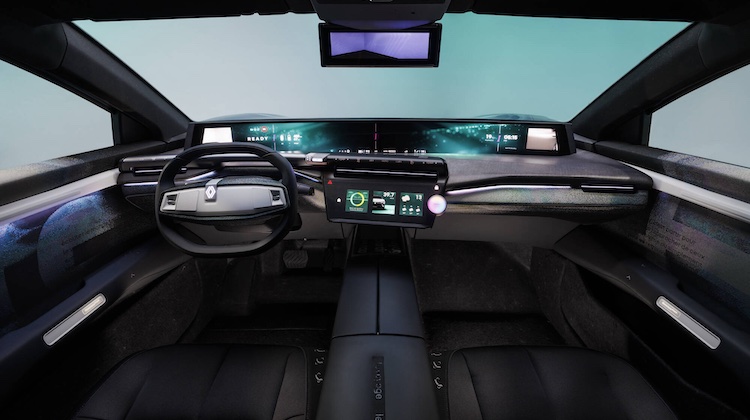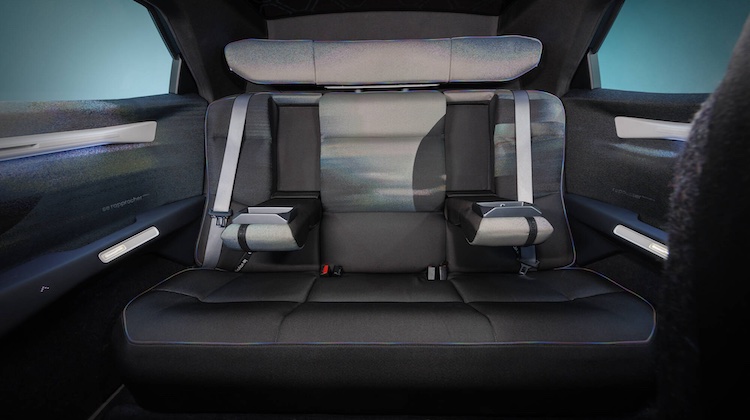
Renault just unveiled its latest concept car—and its interior is pretty juicy.
The Emblème, a sleek hydrogen-electric hybrid, is packed with green tech and futuristic design. But what really has our intention is its interior, which is upholstered in Piñatex, a material made from the fibers of pineapple leaves.
Yep. Pineapple.
The Hog Ring reported on Piñatex way back in 2015, but this is the first time we’ve seen a major automaker actually incorporate it in one of their cars.
At the time, we wrote: “For now, Piñatex is being used to create products like shoes, handbags and home furniture. However, the goal is to introduce it to the automotive market. With automakers under increasing government pressure to make their vehicles more Earth friendly, it’s a high possibility—especially if the fabric can save them money.”
It appears that time has come.

In a press release, Renault describes the Emblème as a “laboratory on wheels,” speeding toward a future of plant-based, sustainable alternatives to leather.
What’s cool here is that Renault isn’t just experimenting with wild materials for the sake of it. The choice feels deliberate. Pineapple fibers aren’t just renewable; they give the interior a unique texture and a more natural, matte finish that stands out from the glossy synthetics we’re all used to. The woven patterns and visible stitching make the upholstery feel modern, yet organic—perfect for a concept focused on sustainable luxury.
Of course, Piñatex isn’t the only sustainable material employed in the Emblème’s interior. Designers also used linen and woven polyester, recycled foams, and trims colored with water-based paints. Even the seat padding was designed for disassembly at end-of-life. Altogether, the Emblème’s interior is 50% recycled and 95% recyclable by mass.
But it’s Piñatex that really has us amazed. It only took 10 years for the material to go from prototype to the cabin of a cutting-edge concept car. That’s no small feat in an industry known for slow pivots and long production cycles.

If Renault’s experiment is any indication, pineapple fiber—and other plant-based textiles like it—aren’t just novelties. They’re viable, durable, and stylish alternatives to traditional materials. And with automakers doubling down on sustainability, they’re likely to become an increasingly common part of our trim kits and sample books.
As strange as it sounds, the future of auto upholstery might just be growing in a field somewhere.
Recent Comments